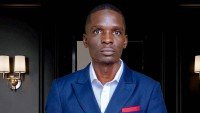
WE speculate about the honesty of others hundreds of times a day. In the media and in our social circumstances, perhaps at work in particular, there are often only a few seconds available in which to make a judgement or decision about a purchase, a health matter, a social relationship or a business decision.
Our estimates of “truth” are often based on “gut feel” or “hunch,” but social psychological research shows that our decisions are much more likely to be accurate if we have been tutored in lie detection, from visual cues, and conversations with other people, for example.
It has been found that, in Western cultures a focused look in the eyes from the other party does not so much indicate honesty, but is more likely to be associated with deception.
When a person lies, there are certain visible momentary twitches that occur in small muscles on the forehead and around the eyes, which can become detectable by the average person, usually after practice with feedback.
Another form of assessment of lying is physiological. For example, voice stress analysis is a technology, which has been developed to determine whether or not a person is likely to be lying from the stress shown in micro vibrations of the voice.
These can be detected by a computer, and from the readout it can be determined how likely the individual is to be lying when answering “YES” or “NO” to a focused question.
The more complex polygraph assesses, in addition, the Galvanic Skin Response, which measures extra perspiration which occurs under stress. This happens very quickly, and it can be detected at the same time as voice stress, pulse rate, and blood pressure increases.
Thus the polygraph measures several aspects of stress reactions to lying. Polygraphs are available worldwide, and variously used, or tolerated, with respect to legal acceptance, police usage, and scientific evaluations of validity. If you refer to Artificial Intelligence (Bing) you will be correctly advised that the polygraph is “controversial.”
- Building Narratives: Nurse pens anti-child marriages fiction novel (Part 2)
- Building narratives: Nurse pens anti-child marriages fiction novel
- Plans under way to rebury Ghana’s Nkrumah – party
- Building Narratives: Nurse pens anti-child marriages fiction novel (Part 2)
Keep Reading
However, research has shown the voice stress analysis method to be no less valid than the more complex and comprehensive polygraph. It is also quicker and less expensive to use. The polygraph is difficult to administer, and requires complex interpretation and analysis. Thus human error can become a significant factor in reducing validity. Voice stress analysis is used in Zimbabwe in attempts to “clear” the innocent from the need for further investigation.
The police use it as a guide, but the results have not yet been accepted in court as evidence.
How often do we lie? Many of us have been brought up by our parents to regard lying as immoral or even disgraceful behaviour. We may even be convinced that we personally do not often lie. However, social psychological research shows that people lie close to a hundred times a day, in various ways, in social interactions amongst family, friends, acquaintances and work colleagues.
We are frequently deceived by body language, attitude, or tone of voice. Written lies appear frequently in the media and can have huge impacts on our lives.
During the Covid-19 crisis Former chief medical advisor to the President of United States Anthony Fauci appeared hundreds of times in the media making various assertions about Covid-19 control measures and the effectiveness and safety of vaccinations that have subsequently been proven to be wrong.
For example, masks, insisted upon as being essential, have been shown by research to be ineffective in preventing the transmission of the Covid-19 virus.
It has also been found that Covid-19 vaccinations do not prevent the vaccinated from infecting un-vaccinated persons. Therefore, the demand that we accept vaccinations in the interests of society as a whole has been clearly invalidated. Recently the knee-jerk announcement by the New York Times and many other media outlets that Israel was responsible for the recent hospital bombing has subsequently been shown, by very clear evidence from several sources, to be false.
The bombing was the outcome of a misfiring from a couple of kilometres away, from a Hamas unit. This lie has been clearly exposed, but in communities all over the world demonstrations, sometimes violent, have been mounted by groups who claim to have believed the lie.
In the 1960s, British nutritionist John Yudkin announced that sugar is a highly toxic substance, responsible for many disease syndromes. There was immediate, malign, panic rejection of this finding. However, 60 years of accumulating research has shown Yudkin to have been absolutely correct!
For example, South African Professor Tim Noakes was fairly recently pilloried by the media in South Africa basically for his rejection of carbon-based diets in favour of “low-carb” and low processed food.
Numerous sectors of the population, including the medical, nutritional and food production establishments, attacked him. He lost his professorship, and he bravely fought a court case, against massive pressure, which he finally won in 2017.
Noakes’ professorship was re-established, and to the credit of the scientific establishment, he has received many accolades and rewards for his honesty in adjusting his views in the light of the evidence that became available. He also received for the advances in nutritional knowledge that have been stimulated by his research.
This was despite much continuing worldwide resistance promulgated by the processed food industry, and by a substantial portion of the medical establishment, who typically receive minimal training in nutrition, but much better, intensive tuition, on the use of pharmaceuticals in controlling the symptoms of diseases, such as the metabolic syndrome and diabetes, in particular.
The world population continues to be lied to by the medical, nutritional, food processing and pharmaceutical establishments, which make enormous fortunes by intentionally misleading (lying to) the populations of the world.
A statistical analysis of the quantum of human suffering, instigated daily but incrementally, by processed food lifestyles leading to expensive, drug-dependent painful old age produces a higher degree of net human misery per diem than daily war injuries throughout the world. A distressing but valid contrast! (For scientific evidence McCulloch, Teicholz, Noakes, Campbell, Fung, Malhotra, — original articles/books or YouTube)
- Harrison is the managing director and senior consultant with Human Resources (Pvt) Ltd, Internationally Qualified Psychologist, ex professor, lecturer at University of Zimbabwe. — 0772 400 220/024 2700867, 2700643; [email protected]; www.hres.co.zw.











